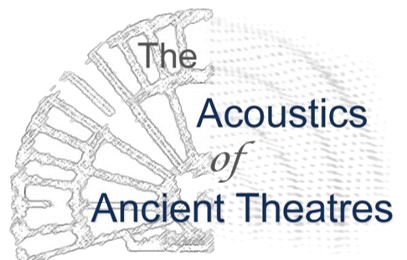
The Acoustics of Ancient Theatres
International Symposium
Verona - Italy, 6 to 8 July 2022
Adapting the EST method to ancient theatres: a proposal
Jean-Dominique Polack , Aidan Meacham , Roland Badeau , Jean-Christophe Valière
DOI: https://doi.org/10.58874/SAAT.2022.173
Abstract:The paper investigates under which assumptions the EST method, initially developed for modelling the propagation of acoustical energy in flat spaces such as hallways and open space offices, can be adapted to unbounded spaces such as ancient theatres. It turns out that it mainly requires that the air column above any position in the open theatre contains finite acoustical energy, whatever its height. This is indeed the case since at high altitudes above the theatre, energy decreases with the square of the height due to the increasingly accurate assimilation of the theatre to a point source. In other words, one must use high enough elements, so that the intensity on the top of the elements can be considered as negligible, leading to negligible absorption and scattering on the top boundary. Therefore, one only needs considering absorption and scattering at the bottom boundary of the elements; and the integration on the elements must be revisited to account for the decrease of intensity with altitude. The corresponding bi dimensional equations will be presented and solved for a variety of absorption and scattering coefficients on the surface of the theatre, and compared to measurements in an actual theatre.
Keywords:energy stress tensor, unbounded spaces, simulation
Pages:31-34
Paper:![]()